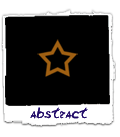Abstract
Introduction
Today growth of information technology is accelerating with geometrical progression, all greater part of business is carried in the realm of information management, therefore a problem of information security is very actual. Almost every firm tries to take the place in the infrastructure of the Internet, to multiply the amount of the goods and services sold by her.
If before a site of firm in the Internet was a luxury and not available to middle and small business, now even small business tries to create the site or certain on-line service. By virtue of expanding realms of influence companies via the Internet increases collection of information, customer preferences are taken into account. Communication with customers is one of the most important points of successful business. Online communication is realized on different channels. Interactive communication – is software clients such as Skype, ICQ, Jabber networks and IRC. Offline is e-mail, which to this day remains a fairly successful way of communication and information exchange.
Why this is important so? Possibly on the first stages of conduct of business in the Internet the volume of the sales will be not great, but when business broadens, the amount of clients, both actual and potential is multiplied, the e-mail address of department of sales or consultant by virtue of human factor gets in the bases of «spamers» and pelting of boxes begins with trash correspondence, i.e. by a spam. Certainly, it is important to understand how to fight with it. For example, if you get 100 spam-letters in a month, possibly it is not needed to buy a software products – your secretary can manage with it. But what we can do if the amount of spam is calculated with thousands, or may be ten thousands? Then software and specialized equipment comes for help. We will consider software, as the most perspective vector of development is in this area.
Relevance of thesis
By information of Wikipedia a spam is the abuse of electronic messaging systems to indiscriminately send unsolicited bulk messages.[1]
Actuality of problem of a spam today for anybody does not cause doubting. Only enough to cite a digit, that a more than half of all electronic letters, entering corporate networks, is a spam in one or another kind. Losses caused by a spam, which carry corporate users, are calculated in tens thousands dollars due to the loss of working hours and the use of resources of networks.
As for actuality in our country, it is necessary to notice that the determination of spam in the legislation of Ukraine was given in 2005.
Spam - not booked preliminary electronic reports, which is mass, or in which reliable information is not listed about the complete name, home postal or electronic address of customer or sender of these messages, or the subsequent receipt of which an user can not halt by informing about it of customer or sender.
Determination is entered in the decision of Cabinet of Ukraine at August, 9 in 2005 N720 "In claim of rules of grant and receipt of services of telecommunications". Though this determination appeared later, than in Russia and much later than the USA and Europe, and it is possible to underline that the topic of spam does not lose actuality for today.
Antispam model
My idea to protect against spam is - tiered technology.
You can see abstraction of top level in the following chart:

Picture 1 - Top level abstraction

The best approach is to mix and match mechanisms. Edge filters reject obvious junk mail, while filters inside the messaging network act on user requirements. Layered installations can be fine-tuned to reduce false positives, while the elimination of obvious spam at the edge means fewer resources are needed to process the reduced number of messages inside.
This is a general idea of filtering a spam. But the purpose of my master's degree dissertation is a marketing analysis of existing antispam tools, and development of on-line antispam service.
The basic stages will be:
- Analysis of existing antispam products
- Estimation of efficiency and filtration methods
- Determine the most effective solution
This service will represent an edge filter which will process certain amount of e-mail and mark each letter by a score depending on whether it is spam or not, and deliver each legislative letter to end user.
To resolve existing objectives information theory, theory of probability, formal logic, theory of sets, graph theory, marketing and economic-mathematical modeling are used.
The object is spam, the subject - the methods and means of protection against spam. Field of research represents spam - as junk e-mail.
References
- ^ «Спам – Википедия», http://ru.wikipedia.org/wiki/Спам
- «Визначення терміну СПАМ у законодавстві України, Журнал «Інформаційні технології. Аналітичні матеріали», http://it.ridne.net/uaspamdef
- «AntiSpam Techniques», Ron Anderson, 2004 http://www.networkcomputing.com/showitem.jhtml?docid=1509f1
- Отчет «Лаборатории Касперского» о спаме за июль 2007, http://www.spamtest.ru/document?pubid=208050373&context=1
- Спамтест: технологии фильтрации спама, http://www.spamtest.ru
- С. Глущенко, «Репутационные методы в построении антиспамовых систем», 4ая Международная Конференция «Проблема спама и ее решения»
- RAZOR, http://razor.sourceforge.net/
- Distributed Checksum Clearinghouse, http://www.rhyolite.com/anti-spam/dcc/
- «The State Of Spam», Christopher Heun, 2006 http://www.networkcomputing.com/showArticle.jhtml?articleID=190900438
- «SPAM Playbook: Spam-filtering Tools», Eric A. Hall, 2004 http://www.networkcomputing.com/showArticle.jhtml?articleID=46200595



